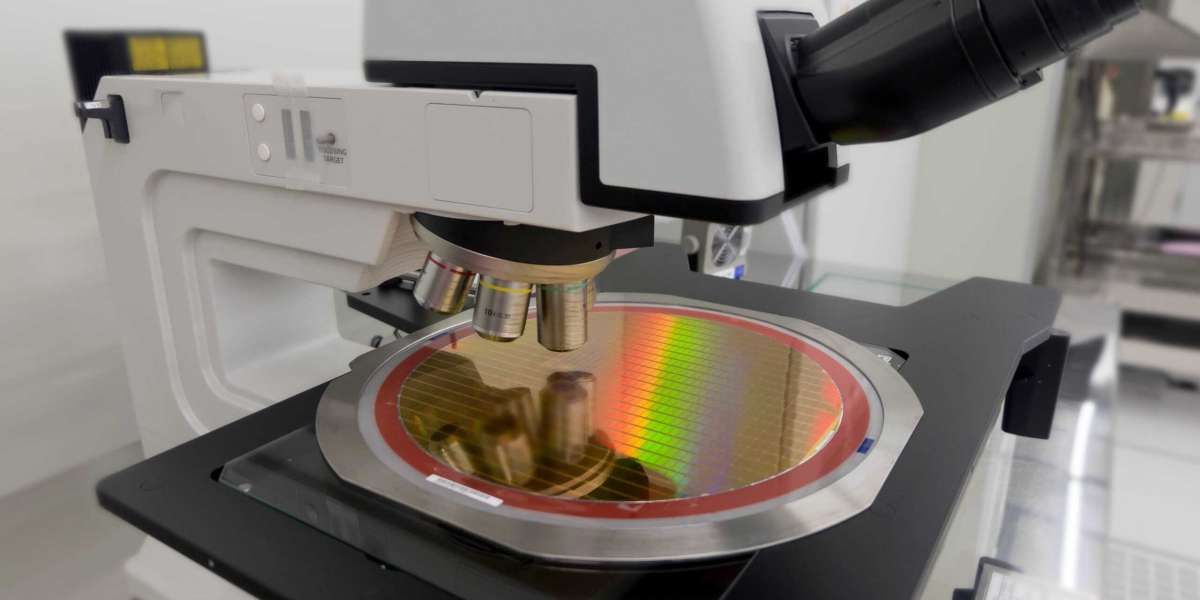In the bustling tech landscape of California, there's a silent hero that plays a vital role in powering the digital revolution: silicon manufacturing. Silicon, the second most abundant element on Earth, has become the cornerstone of modern technology, enabling the development of powerful computer chips and electronic devices. California, known for its innovative spirit and technological advancements, has emerged as a hub for silicon and manufacturing, driving the state's position as a global leader in the tech industry. This article delves into the fascinating world of Silicon Manufacturing in California, exploring its significance, the processes involved, and the future prospects for this critical industry.
The Significance of Silicon Manufacturing:
Silicon, a chemical element with atomic number 14, possesses remarkable properties that make it ideal for manufacturing semiconductors, which form the basis of countless electronic devices. The unique ability of silicon to conduct electricity under certain conditions, combined with its abundance and relative stability, has made it the go-to material for chip fabrication.
The demand for silicon-based components has skyrocketed in recent years, fueled by the exponential growth of the tech industry. From smartphones and laptops to advanced medical equipment and autonomous vehicles, silicon chips power a wide array of devices we rely on daily. As the global appetite for cutting-edge technology continues to grow, so does the need for high-quality silicon manufacturing.
California's Silicon Manufacturing Ecosystem:
- The Epicenter Silicon Valley
When it comes to silicon manufacturing, the name Silicon Valley immediately springs to mind. Situated in the southern region of the San Francisco Bay Area, Silicon Valley has earned its reputation as the heart of technological innovation and entrepreneurship. The concentration of renowned tech giants, startups, and research institutions in this region has created a thriving ecosystem that fosters collaboration, knowledge sharing, and technological advancements.
Silicon Valley's impact on the global tech industry cannot be overstated. Many of the world's most influential tech companies, including Intel, Apple, and Google, have their roots firmly planted in this fertile valley. These companies not only consume a significant portion of the silicon supply but also contribute to pushing the boundaries of silicon and manufacturing through continuous research and development.
- Cutting-Edge Facilities and Research Institutions
To meet the ever-growing demand for silicon chips, California boasts state-of-the-art manufacturing facilities equipped with advanced technology and processes. Companies like GlobalFoundries, TSMC, and Samsung Semiconductor operate cutting-edge fabrication plants in the state, leveraging the latest manufacturing techniques to produce high-performance chips.
In addition to the manufacturing facilities, California is home to several renowned research institutions that play a crucial role in pushing the boundaries of silicon and manufacturing. Universities such as Stanford and UC Berkeley have dedicated research programs focused on semiconductor materials and fabrication processes. The close collaboration between industry and academia in California accelerates innovation and ensures a steady stream of new ideas and breakthroughs.
Silicon Manufacturing Processes:
The manufacturing of silicon chips involves a series of complex processes that require precision, expertise, and advanced equipment. Here are the key steps involved in silicon manufacturing:
- Silicon Purification
The first step in silicon and manufacturing is the purification of raw silicon, which is typically sourced from quartz. The purification process involves converting the raw silicon into a highly pure form suitable for chip fabrication. Multiple refining steps, such as the Siemens process and the Zone Refining method, are employed to remove impurities and enhance the material's electrical properties.
- Crystal Growth
After purification, the next step is crystal growth. The purified silicon is heated to high temperatures and melted, forming a large cylindrical ingot. This ingot acts as the base material from which individual silicon wafers will be sliced. The crystal growth process ensures the formation of a single, uniform crystal structure in the ingot, which is critical for producing high-quality chips.
- Wafer Slicing and Polishing
Once the ingot has been grown, it is sliced into thin discs known as wafers. The wafers are then polished to achieve a smooth, defect-free surface. The thickness and diameter of the wafers vary depending on the intended use and technology node.
- Doping and Layering
Doping is a process where specific impurities, such as boron or phosphorus, are introduced into the silicon wafers to alter their electrical properties. These impurities create regions of positive (p-type) or negative (n-type) conductivity within the silicon, forming transistors and other components. The doping process is performed by using various techniques like diffusion, ion implantation, or epitaxy.
- Photolithography and Etching
Photolithography plays a crucial role in defining the intricate circuit patterns on Silicon Wafers. A light-sensitive chemical, called a photoresist, is applied to the wafer surface. The wafer is then exposed to ultraviolet light through a photomask, which contains the desired circuit pattern. The areas exposed to light undergo chemical changes, allowing selective etching or deposition of materials to create the desired circuitry.
- Metallization and Packaging
After the circuit patterns have been defined, a series of metal layers are deposited onto the wafer to create interconnects between different components. This process, known as metallization, enables the flow of electrical signals within the chip. Once the metallization is complete, the individual chips are separated from the wafer and packaged into protective casings, ready for integration into electronic devices.
Future Prospects and Challenges:
The future of silicon manufacturing in California looks promising, with numerous opportunities and challenges on the horizon.
- Miniaturization and Advanced Nodes
The relentless pursuit of smaller, more powerful devices drives the need for advanced manufacturing nodes. California's silicon manufacturing industry is at the forefront of developing and implementing cutting-edge fabrication techniques, such as extreme ultraviolet lithography (EUV) and 3D transistor designs, to enable smaller feature sizes and higher transistor densities. These advancements will continue to push the boundaries of what is possible and propel the tech industry forward.
- Environmental Sustainability
As the world becomes increasingly conscious of environmental issues, silicon manufacturing faces the challenge of minimizing its ecological footprint. Efforts are being made to reduce energy consumption, optimize water usage, and develop greener materials and processes. California's commitment to sustainability aligns with these goals, making it a hub for sustainable silicon.
- Supply Chain Resilience
The COVID-19 pandemic exposed vulnerabilities in global supply chains, including the semiconductor industry. California aims to enhance supply chain resilience by expanding domestic manufacturing capabilities, reducing reliance on overseas production, and strengthening collaboration between industry, government, and academia. These measures will ensure a stable supply of silicon chips to support the rapid pace of technological advancement.
Conclusion:
Silicon manufacturing in California plays a pivotal role in driving the tech industry forward. With its rich ecosystem of innovative companies, cutting-edge facilities, and world-class research institutions, California continues to shape the future of silicon and manufacturing. As technology evolves, the industry faces both opportunities and challenges, from advanced node miniaturization to sustainability and supply chain resilience. However, the determination and collaborative spirit ingrained in California's DNA position it as a frontrunner in the race to push the boundaries of silicon and manufacturing and power the digital revolution for years to come.








